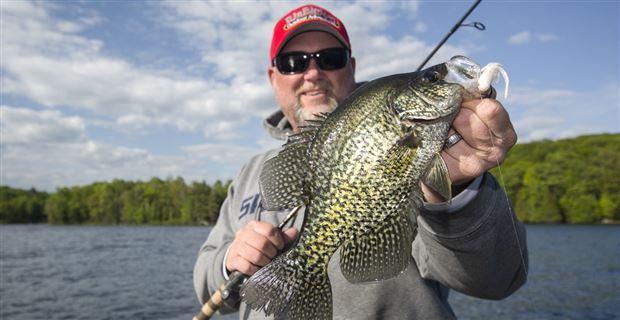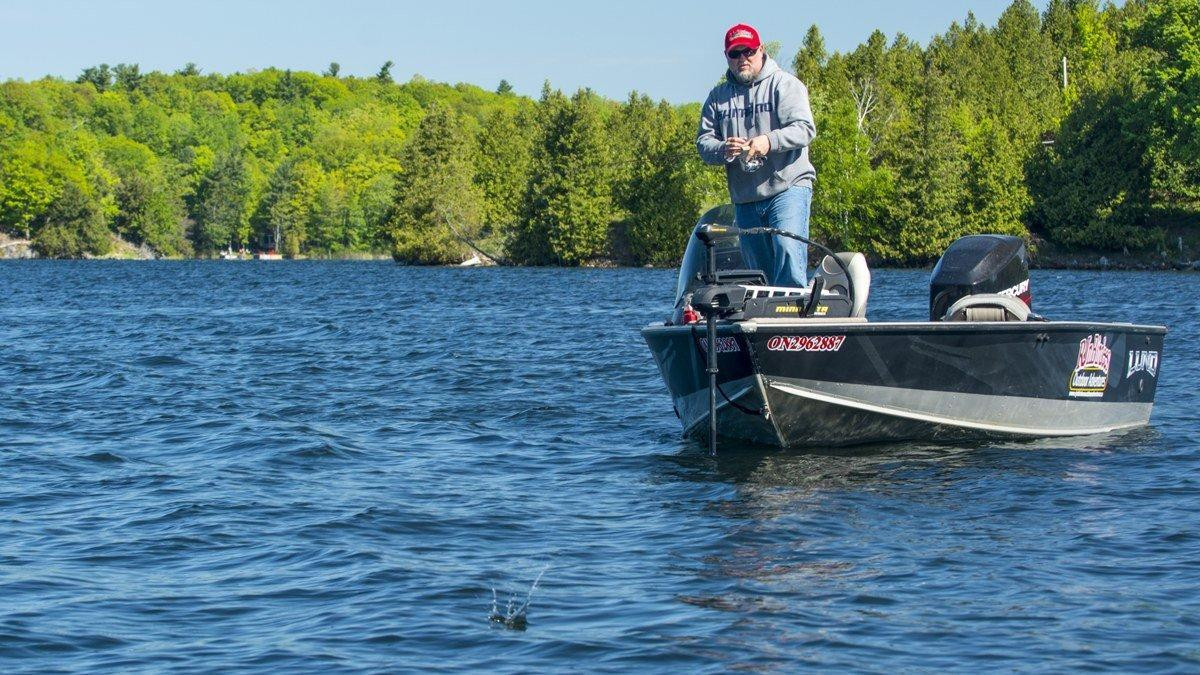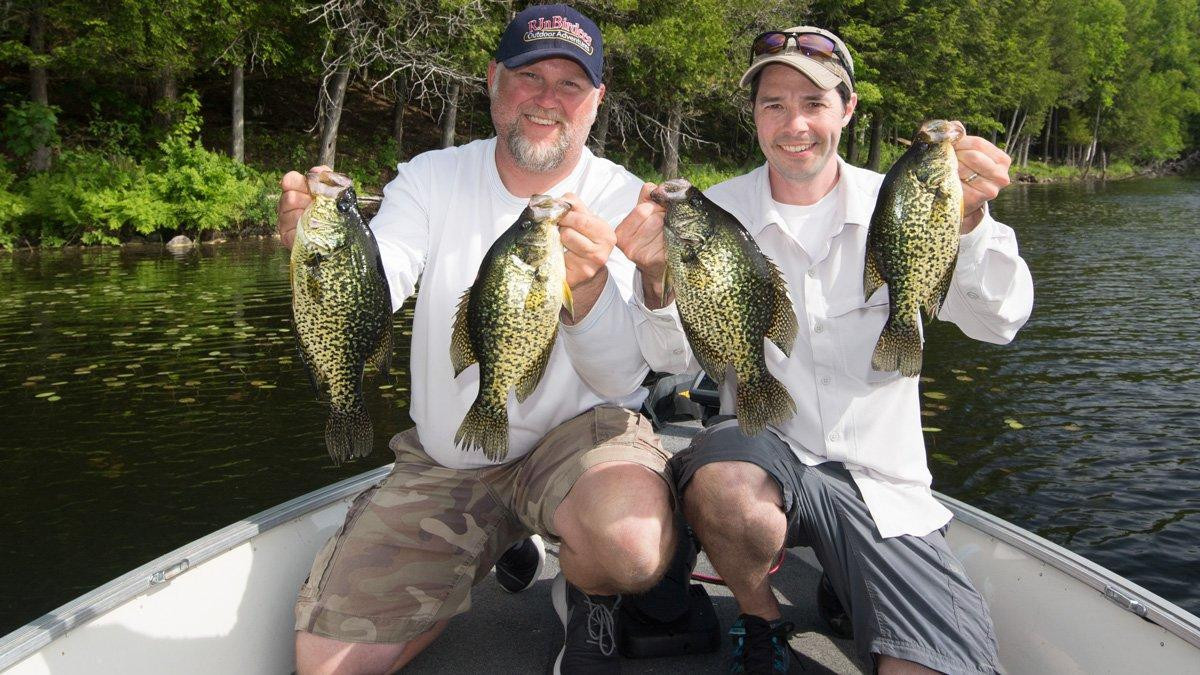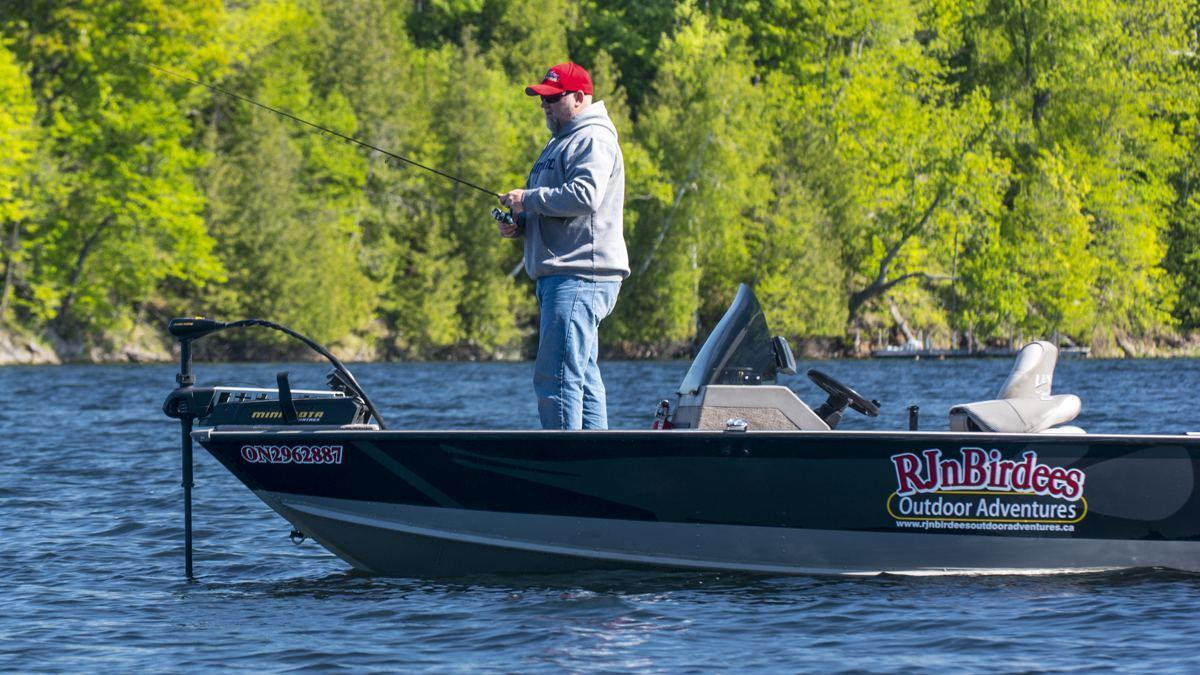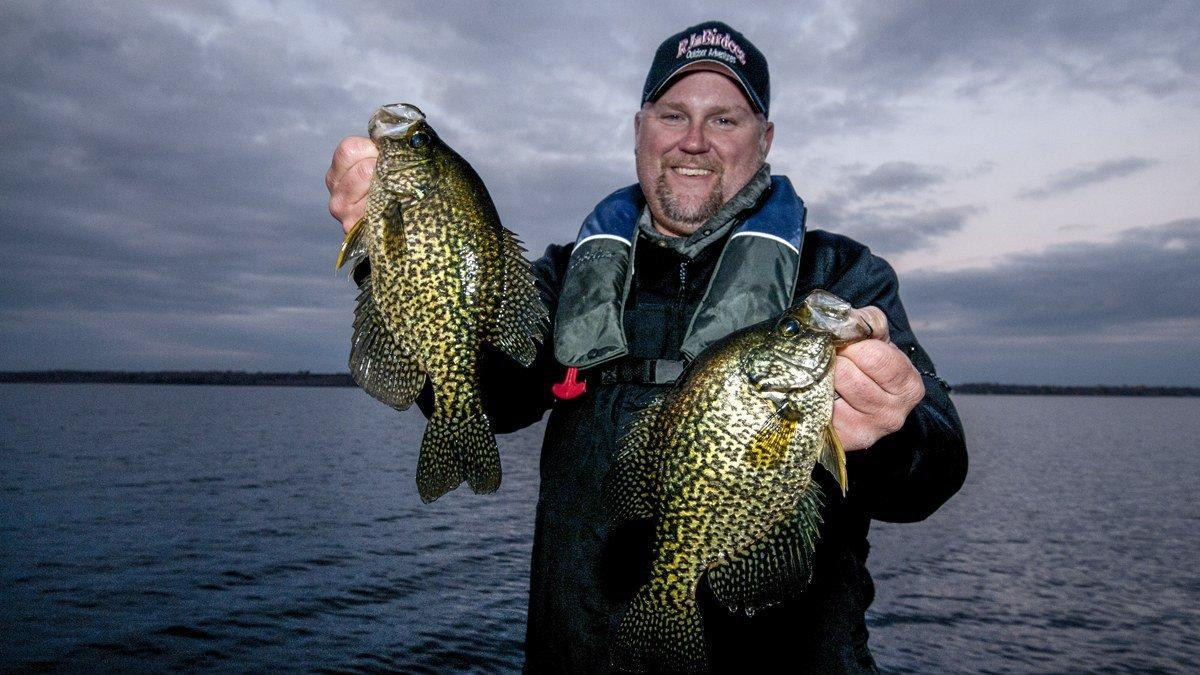On northern lakes, deep vegetation is a great place to cast jigs for black crappie. From summer into fall, crappie relate to healthy aquatic plants. They use deep weed beds for cover and as a place to hunt baitfish and other food. That’s why you should fish deep grass for crappie.
Ontario guide, Rob Jackson, consistently catches big crappie suspending around deep milfoil, cabbage and other plants in 8- to 14-foot depths. A 2-inch tube jig is his top lure. Fishing predominantly clear lakes, Jackson finds crappie bite best in the day during overcast skies and with little to light wind conditions. Sections of murky water are also preferred.
Here are 5 parts to Jackson’s straightforward approach for catching crappie:
- Finding the best vegetation
- Casting tactics
- Fishing peak times
- Working an area
- Sighting slabs
Finding the best vegetation
Clear, fertile natural lakes typically contain a lot of vegetation, but not all plants hold crappie. Using Navionics’ contour charts to pinpoint bays, flats, points and drop-offs between 8 to 14 feet, Jackson focuses on the following areas:
- Near spawning sites
Anglers should look for healthy, deep milfoil and cabbage near crappie spawning areas. Crappie spawn in shallow bays in spring, then often move to deeper habitat, such as grass flats and adjacent deep water, by summer. Following this approach will quickly eliminate a lot of unproductive water. - Mixed greens
Uniform vegetation is rarely as productive as sections within a bed holding different plants. Case in point, crappie love isolated clumps of cabbage within a larger milfoil bed. Anglers finding these clusters will be rewarded. - Bet on bends
Crappie like inside and outside turns along the outside edge of vegetation. These bends often act as travel corridors between deep to shallow water, and can hold good numbers of fish. Fingers, points and bars are equally productive.As an example, one pothole lake Jackson fishes has a consistent stretch of shallow to deep vegetation growing along a shoreline.
“On that lake, I often catch crappie where the weeds push out to deep water,” Jackson said. “It’s easy to see. Everything is straight along the shore, then the lily pads form a point, sticking out into deep water. The point is just that little something different, and it holds a ton of crappie.”
- Rocky uprisings
Crappie are attracted to rocks within deep grass. Boulder piles, reefs and small islands surrounded by weeds will hold fish. The combination of large boulders and sparse vegetation is another reliable mix.
Casting tactics
Once Jackson locates prime water, he dissects it using a 2-inch tube on jighead. Here are 7 elements of his approach:
- Upsize for slabs
“A lot of big crappie in weeds are chasing minnows and young-of-the-year yellow perch and bluegills,” Jackson said. “These slabs aren’t the bug-eating variety. I use a big, bulky 2-inch tube to get their attention, but to also keep the smaller panfish away.” - Light power
The tube is cast on 4-pound monofilament using a G. Loomis TSR 792 6-foot, 7-inch light action spinning rod and Shimano Sahara 1000 reel. The rod’s soft tip helps accurately pitch the tube, while its strong backbone is critical for controlling a big crappie and stopping it from digging into cover.
- Pitch it
Short to medium casts are best for dissecting the tops and edges of deep vegetation. Jackson line watches for hits and long casts can make strike detection difficult. Also, fighting a crappie on short string is also preferable because long-line battles can spook a school.
- Nice and easy
“I don’t get fancy with the tube,” said Jackson. “I lift it with a gentle slow raise, then let it sink and glide on slack line. Sometimes I deadstick it. Crappie will suck it right off of the weeds.”
- Slow sink
A 1/32-ounce or 1/16-ounce jighead gives a tube a lazy fall crappie find irresistible. Being lightweight also prevents the tube from sinking far into the weeds, reducing hang-ups.
- Start with white
A white tube’s a reliable starting color. It mimics baitfish. It’s also easy to see in the water. When the jig disappears on the drop, Jackson sets the hook. Pink-white, green and black-chartreuse are also used.
- Dangle it
“Sometime crappie want a bait hovering, so I’ll also work a tube beneath a float,” Jackson said. He wind drifts the rig over the top of vegetation on 6-pound monofilament with slow twitches from a 7-foot, light action Shimano Clarus spinning rod. A float is also used to make longs casts to cover water on deep grass flats.
Fishing peak times
Weed-living crappie in clear lakes often prefer feeding during low or diffused light. The following are prime conditions.
- Dawn and dusk
The bookends of the day are crappie feeding periods around vegetation. Fish buried under the canopy during the day suspend above it during low light, looking for food.
- A bit of tinge
Finding sections of murky water within clear lakes will reward anglers during the day. Algae and other sediment diffuses sunlight, making crappie more apt to suspend along and above vegetation during banker’s hours.
- Overcast skies
Cloudy weather stimulates crappie. These conditions prolong dawn and dusk bites, as well as stimulate daytime feeding.
- Light winds
A gentle breeze rippling the surface diffuses light, making crappie less skittish in clear water. Light winds combined with overcast skies or a mix of sun-and-clouds are even better.
Working an area
Crappie are a schooling fish. Catching one means there are more around, so boat position is important. When crappie are relating to isolated clumps of cabbage within a milfoil bed, Jackson uses a marker buoy to keep his Lund in the zone.
“Don’t throw the marker buoy on top of the fish,” Jackson said. “Set it off to the side of where crappie are holding, so you don’t spook them. Then use the buoy as a reference point.”
A GPS is just as valuable. This rang true last summer when Jackson and I fished together. The crappie were cruising over a deep grass flat and along its outside edge. We’d catch a few fish, then the school would scatter. To intercept them, we’d cycle back and follow the GPS trail and waypoints of previous catches. This worked many times through the afternoon.
Sighting slabs
Looking for suspending crappie cruising above plants will catch anglers more fish. Seeing papermouths can be tricky, even with polarized glasses. Jackson recommends looking for the chalky tips of a big slab’s bottom fins, which standout against the dark vegetation below.
“Always be on the lookout for a crappie’s ‘white slippers,’” Jackson said. “Then pitch the tube a few feet in front of them, let it fall and watch for the bite.”
The next time you’re fishing crappie, be sure to spend some time casting deep vegetation. Focus on healthy greenery in the vicinity of spring spawning habitat, and give a 2-inch tube a try. This straightforward approach helps Jackson and clients land loads of slabs each season.
Tip – A 2-inch tube is a meaty meal for a crappie. Use a quality hook featuring a long shank and sizable gap to stick light biting slabs.


